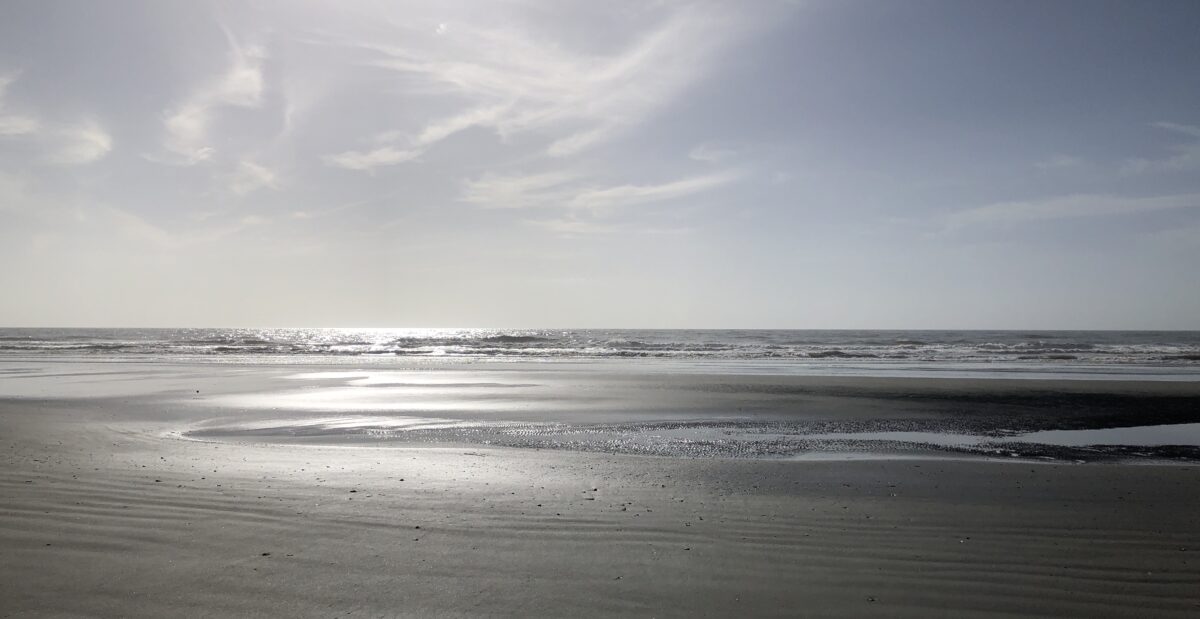One of the many perks of living in Charleston County are the many beautiful beaches nearby. Sullivan’s Island, Folly, Edisto, Isle of Palms, and Seabrook Islands all boast spectacular sandy, ocean-side beaches, each with unique appeal and community character. Some are perfect for surfing, others for a leisure swim and sunbathing, and still others for pier fishing and watching wildlife. We’ll introduce you to the best Charleston beach houses in this Charleston beach real estate guide blog.

Folly Beach is a small surfing community located about eleven miles from Charleston past James Island. Folly has Civil War era history, the famous Morris Island Lighthouse constructed in 1876, mid-century beach cottages, and more year-round residents as people discover the appeal of Folly’s “kitsch character and iconic surfer vibes.” Folly became a vacation destination beginning in 1919 when Folly Island Company purchased the Charleston beach house, recognizing that auto commuting made the island delightfully accessible for Charlestonians and visitors from further away. The pier (rebuilt several times and recently renovated) was constructed in 1931, and the lost Atlantic Pavilion and amusement parks entertained guests between swimming and surfing.
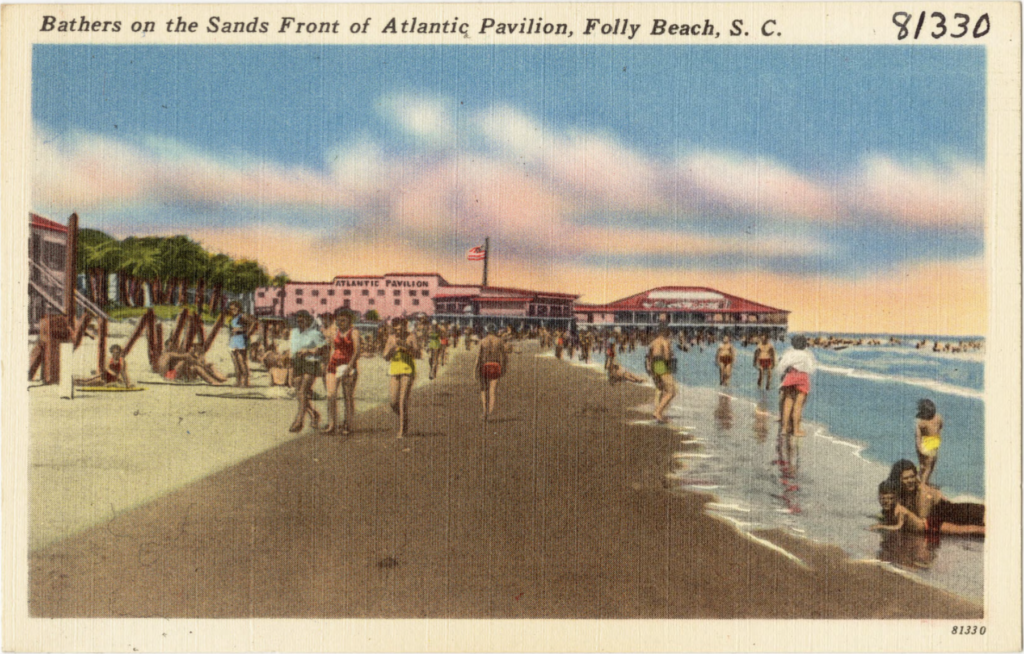
Today, visitors to Folly Beach come for the swimming, sun, saltwater fishing off the massive public pier, and surfing. The beach itself is accessed via Folly Road/ State Highway 171, which turns into aptly named Center Street in the midst of the island, and dead ends at East Arctic Avenue (the beachfront road) and the Folly Beach pier. Center Street and its cross streets are the place to go for Charleston beach house, restaurants, bars, surf shops like famous McKevlin’s, souvenir stands, and those snacks and sunscreen you need to pick up before you hit the beach.
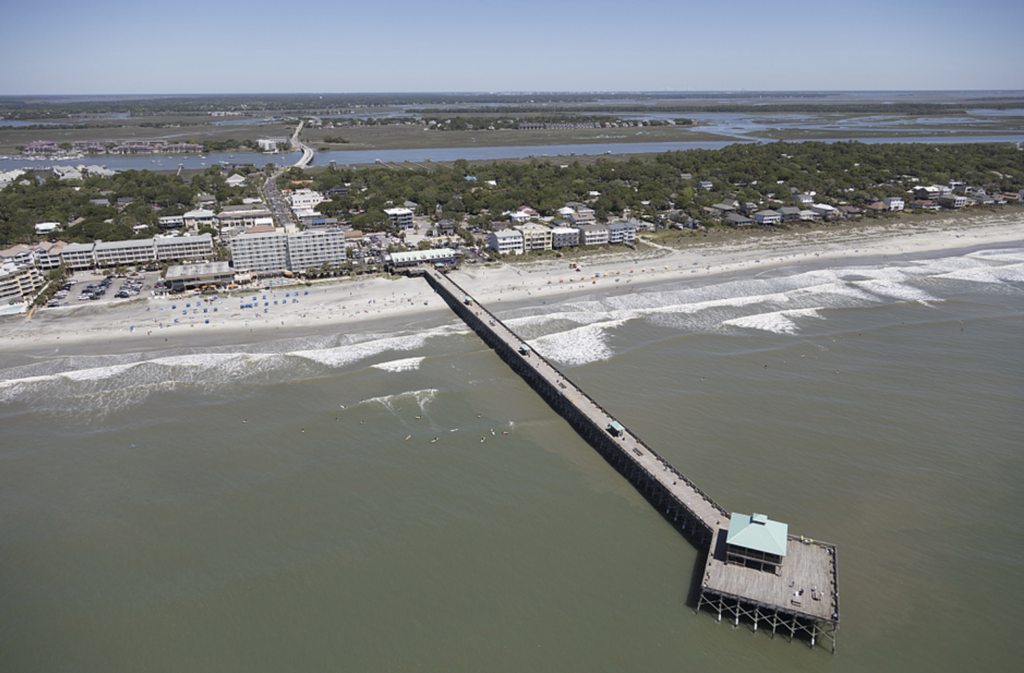
The Fishing Pier and adjacent Folly Island County Park have a paid parking area, and there are other pay-by-the-hour or day lots nearby along Arctic Avenue (typically less crowded the further away from busy Center Street). This Charleston beach real estate guide blog remind us that Charleston’s beaches have a tidal variation of several feet, which affects accessibility, swim depths, and sea life. Morris Island Light, for example is only accessible by a beach walk at low tide, but visitors are welcome to make the trek to swim and see the exterior of the historic structure. Folly has lots of Charleston beach houses and Airbnbs for rent, and several traditional beachfront hotels like the tides and Folly River Lodge near a boat landing. To learn more about Folly’s history, visit https://charlestonempireproperties.com/folly-beach-the-edge-of-america/

Moving south, Kiawah Island is home to luxury mansions and Charleston beach houses, a new urbanist town area, and Kiawah Resort, “your destination for luxury golf and beach vacations near Charleston, South Carolina. Indulge in Five-Star accommodations, world-class resort amenities, award-winning recreational activities, and some of the most respected golf courses in the nation. You’ll enjoy all of this and more in distinctively tranquil natural surroundings—for a travel experience you’ll wish would never end.” Visit www.kiawahresort.com to learn more. Historically, Kiawah was home to an eponymous Native American tribe, and was owned by the Vanderhorst, Seabrook, and Wilson families, who operated cotton plantations there.
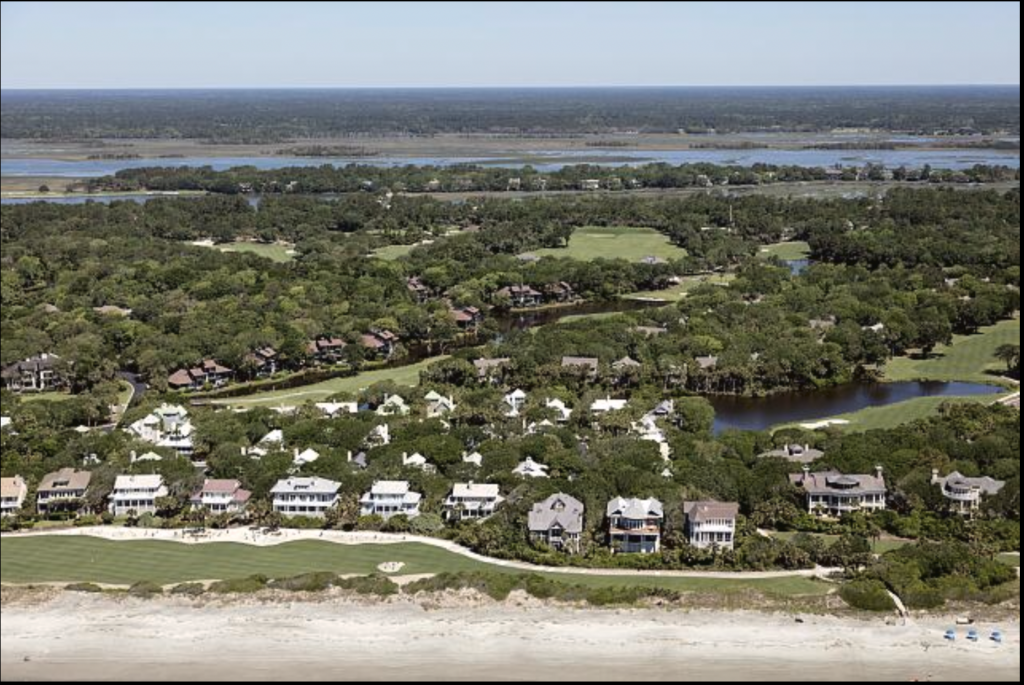
The island is also home to Beachcomber County Park, in our Charleston beach real estate guide it is a beautiful public beach that costs just $5 to $15 per vehicle (depending on the season) to visit. Please note that once the lot fills up, the Charleston beach house is essentially closed for the day or until other visitors depart, so plan to arrive early or later in the day. The silver lining is that the beach is never crowded, so is a relaxing place to read and sunbathe, and the beach is spacious so you won’t have to compete for space with other swimmers or fishers. The park has boardwalks, chair and umbrella rentals, lifeguards, dressing rooms, outdoor showers, a snack bar, and a picnic area. Visit https://www.ccprc.com/1411/Kiawah-Beachwalker-Park for more park details.
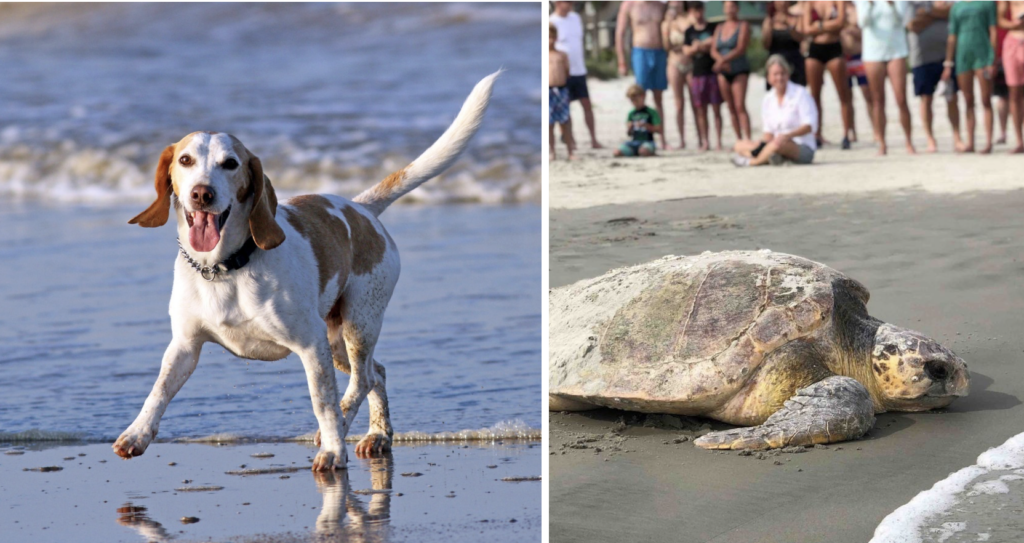
Seabrook Island is home to Pelican Beach and North Beach. Pelican is famous for its sunsets and is popular with families looking for Charleston beach houses; the town’s websites notes that Pelican is “great for swimming, floating, sunbathing, and building sandcastles”. North Beach is great for “active families and nature lovers, and is open for walking, biking, sandcastle building, and is one of the few beaches in South Carolina to offer horseback riding on the beach.” Beachgoers often spot dolphins and turtles, and there is a designated off-leash area for dogs. Seabrook Island Equestrian Center is a full service boarding stable that offers beach rides or scenic inner island trail rides. Visit https://www.seabrookisland.com/club-life/equestrian/to book today. Keep in mind that some sections of Seabrook are for residents and club members only, for some Charleston beach real estate map guide, so visit https://www.townofseabrookisland.org/beach-rules.html.
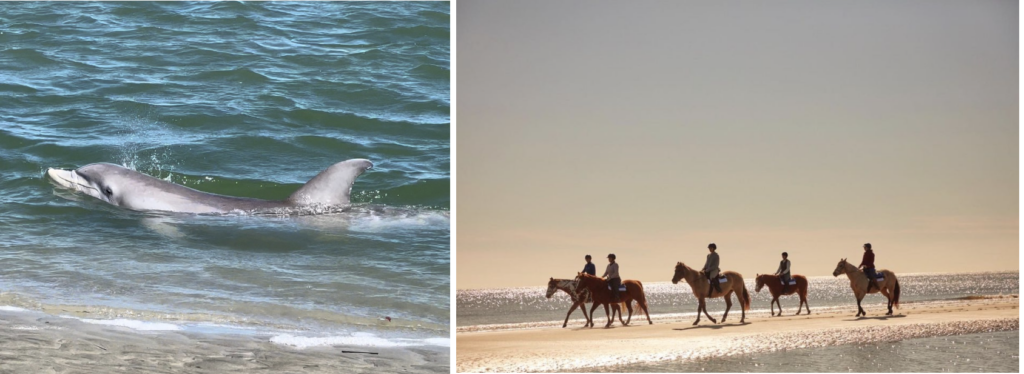
Edisto Beach State Park is a family-friendly site open to all, offering 1.5 miles of pristine beach, cabins, Charleston beach houses, and campgrounds for visitors who want to make a vacation out of their visit, a ecology learning center, picnic shelters, and a parking area for the day trippers. Admission is just $8 for adults and $4 for children. Edisto Beach is a National Historic Landmark, with a shell midden (or shell “trash” deposit) dating back to 2,000 B.C. and created by the Edisto tribe of Native Americans for whom the beach and island are named. The Bache Trail features a granite monument from 1850 erected by land surveyors measuring and mapping the coastline from Maine to the Gulf of Mexico. About an hour’s drive from downtown Charleston, Edisto Beach is generally less crowded than the beaches closer to the city and its sprawl. The park site also features boat landings and fishing spots.
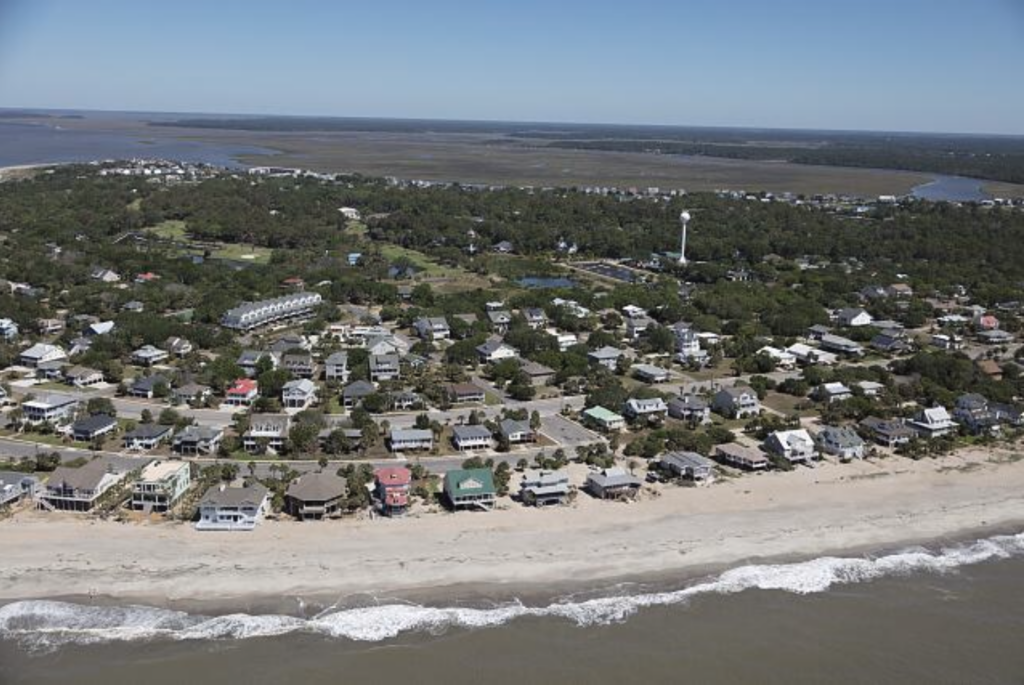
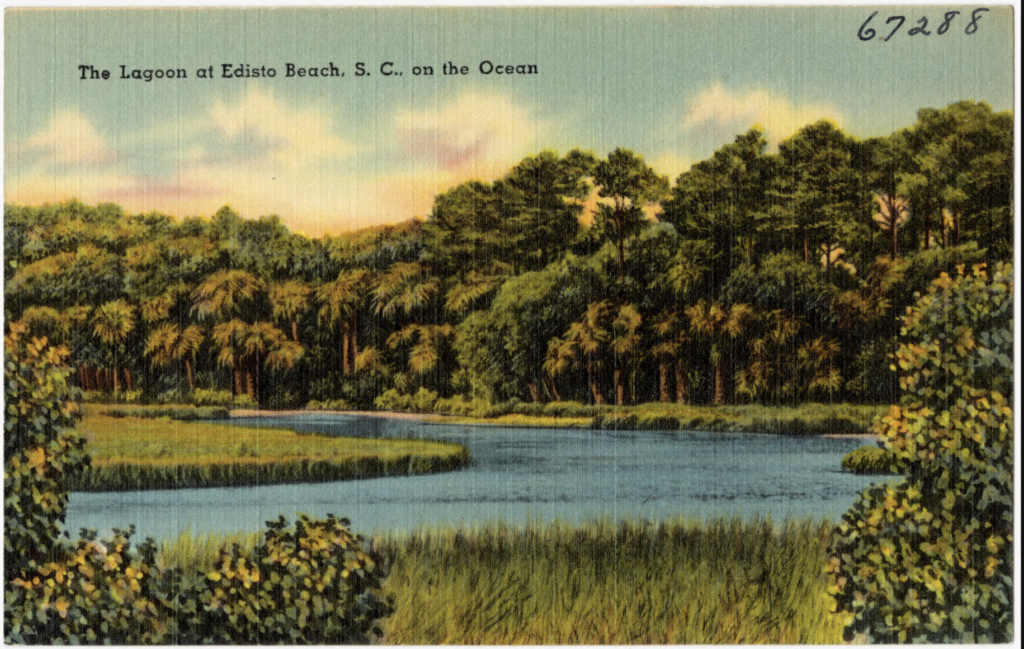
Heading north from Charleston, the closest beach is Sullivan’s Island, named for Florence O’Sullivan, a ship captain who arrived in South Carolina as one of the earliest settlers in the late seventeenth century. Sullivan’s Island is a Charleston beach house community with a long and important history as a first line of coastal defense from the American Revolution to World War Two. The island is most famous for the Battle of Sullivan’s Island, on June 28, 1776, which was the first decisive patriot victory of the Revolutionary War. General William Moultrie famously repelled the British Royal Navy with a simple palmetto log and earthen fortification, at the site of Fort Moultrie today. Traditionally, most of the Charleston beach houses on the island were seasonal residences for Charlestonians, although with the ease of modern transportation to and from the island by bridge, it has become more densely built and has many year-round residents today.
By the 1840s, visitors could get to the beach via ferry. Today thanks to Charleston beach real estate guide, Sullivan’s is easier to get to than ever. The small beach community has Middle Street, the main thoroughfare to find shops and restaurants, and famous pubs like Poe’s Tavern. Middle runs along the center of the long, narrow island just a block from the beach. One side of the island fronts the Intracoastal Waterway and the other, the Atlantic Ocean, with 2.5 miles of beachfront that is mostly public. Sullivan’s Island has a small town, uncommercialized character. There are fewer places to stay like Charleston beach house and no large hotels, so the island and its beaches offer a relaxing atmosphere. There are access points at several stations (so-called because they were previous Coast Guard access points) and Stations 18, 21, and 26 have wooden boardwalks for ADA accessibility. Public parking is allowed in the public right of way, but do pay attention to the no parking signs along some residential stretches.

Isle of Palms lies past Sullivan’s Island, from Charleston beach real estate guide and it is about a half-hour drive from Charleston (without traffic) by driving across Mount Pleasant and then taking SC 517/ Isle of Palms Connector straight to the beach. Isle of Palms has been attracting vacationers since well before there were bridges to access it, so guests came by ferry or private boat. J.S. Lawrence bought the island in 1899 and renamed Hog Island (also called Long Island historically) as IOP. Sicilian investor and real estate mogul James Sottile constructed a Charleston beach house or pavilion, hotel, amusement park, and a trolley line to bring guests from the mainland in the 1910s.
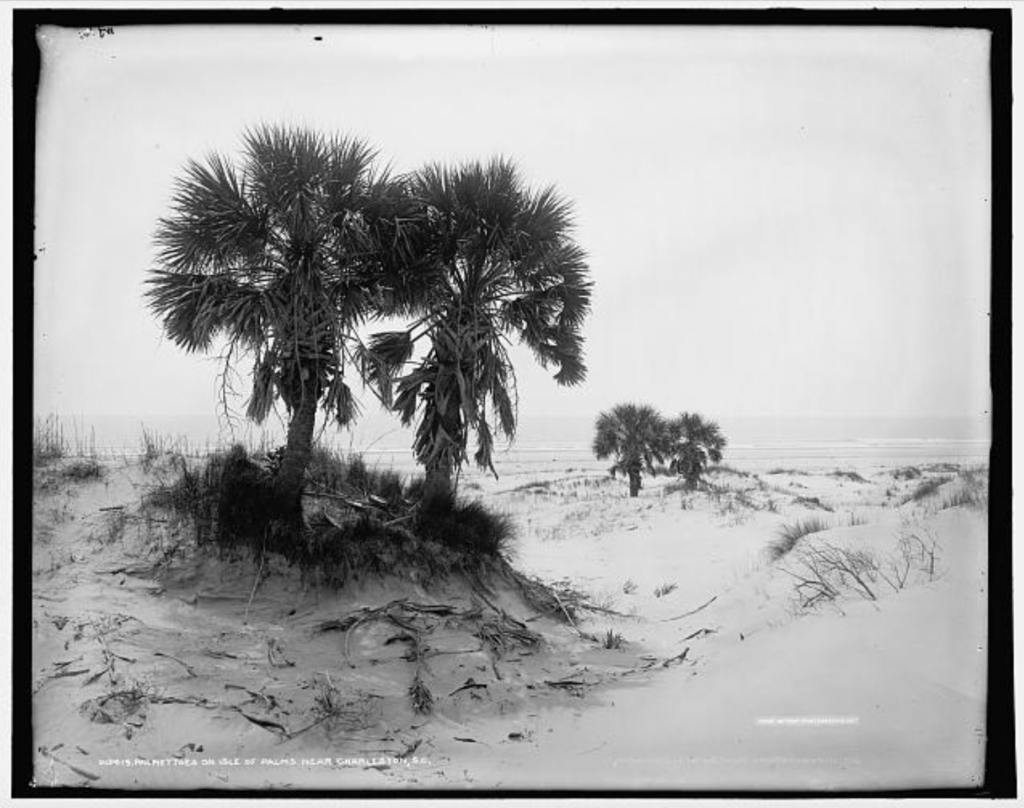
The island saw another surge of interest in the 1970s when Wild Dunes Beach and Racquet Club was created. Wild Dunes is a private community at the northeastern end of IOP, but the rest of the island’s shore line have popular public beaches and the Charleston County parks system operates a marina and several boat landings as well.

Overnight guests to IOP can choose from Wild Dunes Resort, several beachfront hotels, or rent a Charleston beach house or cottage, or villa. There are kayak rentals, golf courses, and tennis facilities to get in the exercise, and plenty of dining at restaurants including Coastal Provisions and Acme Lowcountry Cantina to refuel. Don’t forget to catch a live show at the famous beach-front Windjammer on Ocean Boulevard. To get to the beach itself, visit our Charleston beach real estate guide blog for many public access points along the Boulevard. The largest is Isle of Palms County Park, which has a similar parking setup and pricing as Kiawah Beach, and offers the same wide list of Charleston beach house amenities from a concession stand to outdoor showers. Isle of Palms is most popular for families, swimmers, and visitors who stroll on the boardwalk before dinner on the main drag.
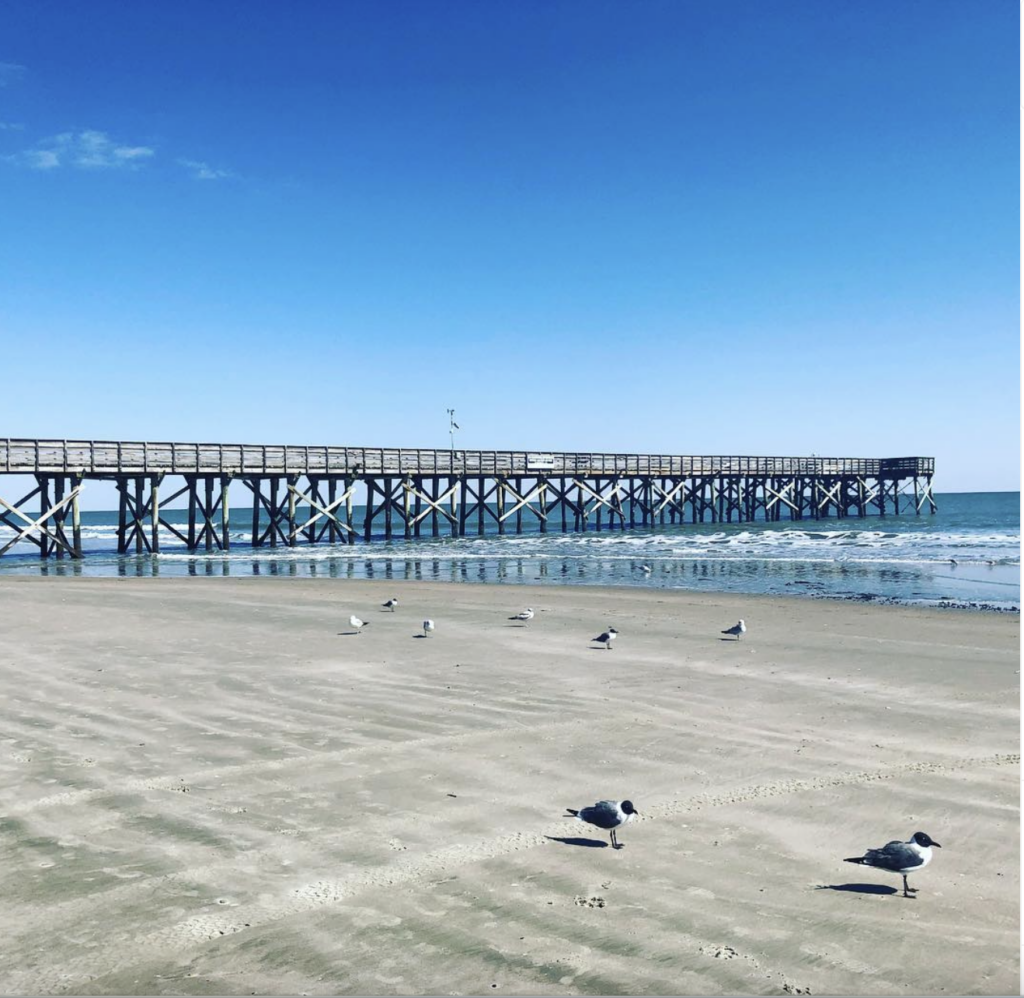
At the northern end of Charleston County’s coastline is Bulls Island in the Cape Romain National Wildlife Refuge, which is a protected landscape with a wide array of local wildlife and flora. Bulls Island encompasses 5,000 acres and is a large barrier island with maritime forests, historic sites, miles of walking trails, a variety of Charleston beach houses, and the highlight: is Boneyard Beach, a beautiful stretch of sandy beach and dunes. Boneyard Beach is named for the sun-washed dead trees that dot the shell-covered beach. Of the beaches on our list, Bulls Island is the most secluded; it is only accessible via ferry ride with https://www.coastalexpeditions.com, which offers guided tours along the Intracoastal waterway to the site, or by kayak. Boneyard Beach is both a nature lover’s paradise and a great spot to swim or walk the surf.
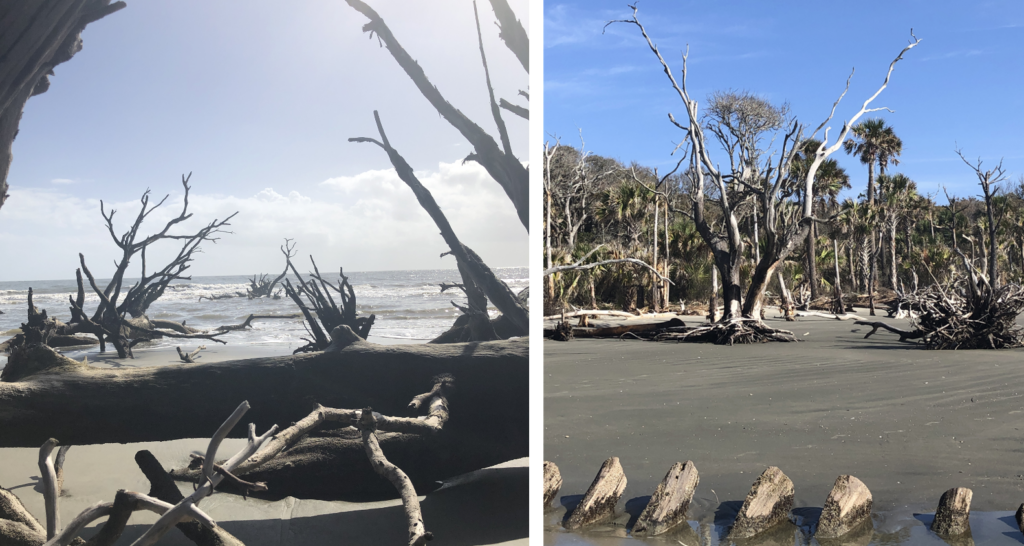
Be aware that while most sea islands in the Lowcountry have some public beach access, many areas are private and only available to island residents or visitors who rent a Charleston beach house or villa. Also note that parking has become more challenging as the beaches have become increasingly popular with visitors and locals alike. All the more reason to contact Charleston Empire Properties today about purchasing a beach house and having constant ocean access at your convenience!
Uncover Charleston’s best beaches with Charleston Empire Properties! Discover top coastal homes and start living the beach lifestyle you’ve always dreamed of. Check out our exclusive property listings now and contact our team of expert & best realtors in Charleston SC for a Charleston Beach real estate guide to find your perfect seaside retreat!
Sources:
- Library of Congress photo collection.
- Christina B “Folly Beach: Edge of America.” Charleston Empire Properties
- Christina Butler. “Sullivan’s Island.” Charleston Empire Properties.
- Ashton Cobb. Kiawah Island: A History. Charleston: History Press, 2006.
Elizabeth Stringfellow and Laylon Wayne Jordan. A Place Called St. John’s: The Story of John’s, Edisto, Wadmalaw, Kiawah, and Seabrook Islands of South Carolina. Charleston: Reprint Company, 1998. - Kiawah Island Company. https://www.kiawahisland.com/
- Bob Raynor. Exploring Bull Island: sailing and walking around a South Carolina Sea Island. Charleston: History Press, 2005.
- Wendy Nilsen Pollitzer. Isle of Palms. Charleston: Arcadia Press, 2005.
- Tichnor Brothers historic postcard collection. Boston Public Library.
- Gadsden Cultural Center. Sullivan’s Island. Charleston: Arcadia Publishing, 2004.
- Susannah Smith Miles. Island of History: Sullivan’s Island from 1670 to 1860 with reminiscences of Moultrieville and Fort Moultrie. Mount Pleasant: Historic Views, 1994.
- seabrookisland.com
- https://www.coastalexpeditions.com
- https://www.charlestoncvb.com/beaches/sullivans-island/

